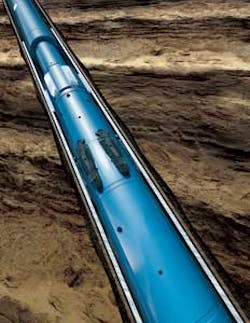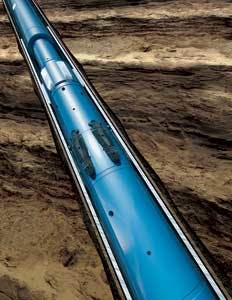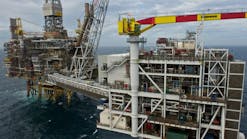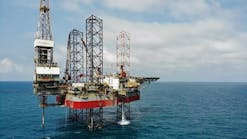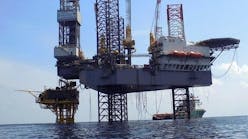Bart Joppe
Courtney Hartman
Baker Hughes
Removing the downhole infrastructure from an offshore well at the end of its life and leaving behind a clean seabed is expensive. According to the US Bureau of Safety and Environmental Enforcement (BSEE), P&A costs in water depths greater than 1,000 ft (305 m) in theGulf of Mexico (GoM) are estimated at $2.1 million per well for dry-tree wells and $20.6 million per well for subsea wells, based on an average total duration of 25 days. In the central and northern North Sea, the average P&A expenditure is £4.8 million ($8.2 million) per platform well, £10.1 million ($17.3 million) per subsea development well, and £8 million ($13.7 million) per subsea exploration and appraisal well.
Global spending on P&A operations is expected to double in the next decade as a record number of wells reach end of life. The latest Oil & Gas UK Decommissioning Insight Report forecasts that expenditures on UK offshore well decommissioning from 2013 to 2022 will total £10.4 billion ($17.8 billion) and that P&A will account for the largest category—£4.5 billion ($7.7 billion), or 43% of the total.
P&A technology development is driven largely by the requirement to lower the associated costs to the operator. Several approaches can be envisioned. The first is to minimize the duration of intervention operations by minimizing the number of trips required, and an example is casing removal.
For the sake of cost effectiveness, casing removal should be minimized where possible. However, it is sometimes necessary to repair the well's integrity by placing well barrier elements across the wellbore or by removing casing to comply with regulatory requirements to leave a clean seabed post decommissioning. In these situations, minimizing the number of trips required to retrieve casing is important to reducing nonproductive time (NPT), unnecessary costs, and health, safety and environmental (HSE) exposure. Baker Hughes has introduced a new casing retrieval technology developed specifically to address deepwater P&A needs. The Harpoon cut-and-pull spear is designed to increase the likelihood of retrieving the casing in each run by performing multiple recovery attempts in a single trip.
A daunting challenge
BSEE regulations include idle iron abandonment plans that call for permanently plugging a well and removing all platforms and other facilities when the well poses a hazard to safety or the environment, or when it is no longer useful for operations—that is, it has had no production for five years and there are no plans for future operations. Casing removal is often required as part of the P&A process.
The most cost-effective method of casing removal is the cut-and-pull method. Typically a logging run is performed to verify well integrity and to determine the top of the cement. A hydraulically operated multi-string cutter is then used to cut the casing approximately 10 ft (3 m) above the top of the cement. Following the cut, a casing spear engages the casing and retrieves it.
After decades downhole—encased in cement and subjected to wellbore conditions—casing can present challenges during retrieval. Cement stringers, barite settling, and/or other unknown factors can make pulling the cut casing almost impossible. If the casing is stuck, the spear must be released, pulled out of the hole, then run back in for another attempt. The entire operation is then repeated by cutting at points higher up in the well until a successful pull is made. In difficult wells, this process can compound into a number of wasted trips with the attendant added rig time, higher costs, and increased risk.
The new cut-and-pull spear cuts and pulls casing in P&A operations, slot recoveries, and other retrieval operations where cement bond and solids settlement circumstances are unknown. The spear can be set and reset several times, allowing multiple cut-and-pull attempts in a single run.
Cutting performance is improved because the tool can be used to apply tension during the cutting operation. It can engage the casing directly above the cut, ensuring that maximum force can be distributed at the cut point. The spear is easily set using mechanical manipulation.
When performing a cut-and-pull operation, the casing spear is run to depth in a bottomhole assembly (BHA) consisting of a multi-string cutter, the spear, jar, accelerator, and drill collars. The spear does not require a stop ring, so it can engage the casing at any depth directly above the cut point and transmit maximum force during cutting operations. Once at depth, specially designed slips engage the casing and provide 360° coverage to distribute the load evenly across the casing inside diameter to maximize pulling capabilities and to prevent casing deformation. Applied overpull sets a retrievable packing element stack, which stays energized throughout cutting operations to control circulation paths for added safety. The pack-off feature also enables hydraulic boosting to assist with retrieval.
During cutting operations, tension is applied to the casing to enhance performance. The knives are dressed with Metal Muncher milling technology tungsten carbide cutters which are durable and can perform multiple consecutive cuts, if required.
If a pressurized zone is exposed during cutting, the pack-off device can safely control the circulation of hydrocarbons from the well. The outlet ports are closed and the well is re-balanced so operations can resume safely. A built-in filtration system enhances reliability by preventing cuttings and other debris from collecting in the BOP stack.
The design of the spear supports loads in both directions, so when the cut is complete, the casing can be retrieved using overpull, jarring impacts, hydraulic pressure, or any combination of these. Once the casing is free, the spear unsets from its position at the bottom of the casing and resets at the top of the fish to simplify handling of both spear and casing at the surface.
Displaying 1/2 Page 1,2, Next>
View Article as Single page
